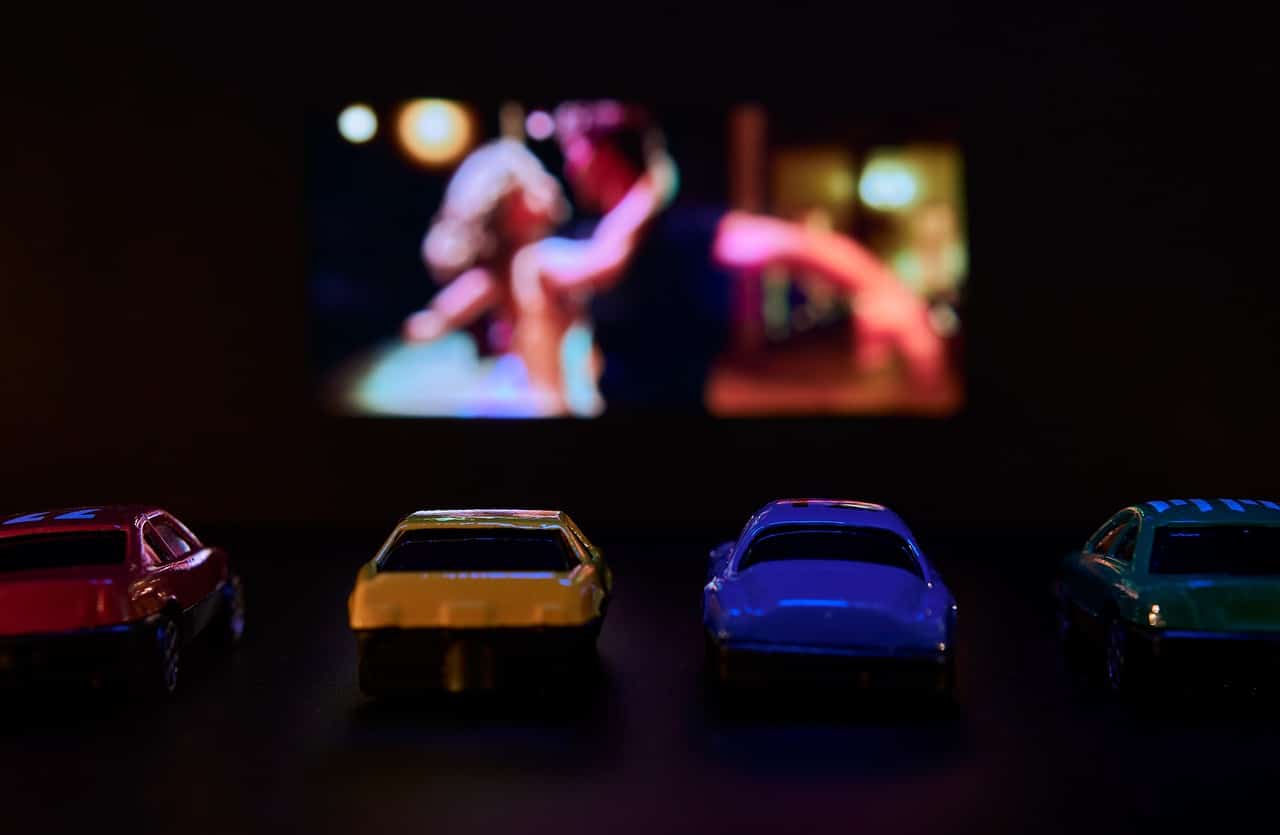
The drive-in allows you to enjoy the cinema from your own car.
A drive-in theater is an open place where a movie is projected on a giant screen that can be seen from inside a car . In this way, the viewer enters the property with their vehicle and follows the film without leaving it.
open air cinema
The drive-in theater allows you to enjoy movies outdoors. It should be noted that it does not offer seats, but rather each client sits in their own car. Usually there is a bar or store on site where you can buy sweets and snacks to consume while watching the movie.
In order for the drive-in to receive a considerable number of people, it must operate on a large lot. Basically it is a large parking lot (or parking lot ) with a screen and a projector . It is key that the screen can be seen from all cars.
It is common that, to facilitate viewing, projections are held at dusk or at night . As for sound, at first speakers were used that were located next to the screen, although later the audio began to be transmitted via FM or AM so that it could be tuned to the vehicle's radio .
History of the drive-in
The first drive-in projects were developed from the mid- 1910s , when the use of automobiles was very limited. Only in the '30s did these sites begin to consolidate, which had their peak between the end of the '40s and the end of the '60s . With the coronavirus pandemic in 2020 , drive-in cinemas resurfaced in several regions by allowing the enjoyment of the seventh art while maintaining physical distancing between people.
The drive-in movie became a popular trend in various parts of the world during the 20th century. The first in history was inaugurated on June 6, 1933 in Camden, New Jersey, United States. It was designed by Richard M. Hollingshead Jr. , who was looking for a way to combine two of his passions: movies and automobiles. Hollingshead's idea was to allow people to enjoy movies from the comfort of their vehicles, especially those who had difficulty accessing traditional movie theaters.
To create the drive-in, Hollingshead used a film projection mounted on the hood of a car and a white sheet as a screen. Additionally, he placed speakers throughout the parking area so viewers could hear the sound of the film in their cars. The admission price was 25 cents per person and $1 per car , allowing entry for all occupants.
The possibility of watching movies from the car attracted many families and couples, becoming a unique social and entertainment experience . However, over time, the popularity of drive-ins began to decline. The rise of multiplex theater complexes and the advancement of home technology such as VCRs and online streaming services led to a decline in drive-in movie attendance. Many of them closed and only a few managed to survive .
Current drive-ins
- Madrid RACE drive-in (Madrid, Spain) : it has a large screen, high-quality sound system and space for more than 300 vehicles;
- Coyote Drive-In (Buenos Aires, Argentina) : offers a wide variety of movies, from classics to recent releases, as well as food and drink services to enjoy during the movie;
- Mission Tiki Drive-In Theater (California, United States) : It is one of the oldest and most emblematic in the United States. In addition to movie screenings, it also hosts special events, such as themed movie nights and festivals;
- Drive-in Star (Mexico City, Mexico) : has a large screen, surround sound and a wide selection of movies in its programming;
- Drive-in Gijón (Asturias, Spain) : It is one of the largest drive-in cinemas in Spain. It also organizes special events, such as concerts and themed performances.

In general, it is possible to buy food and drinks at drive-ins.
